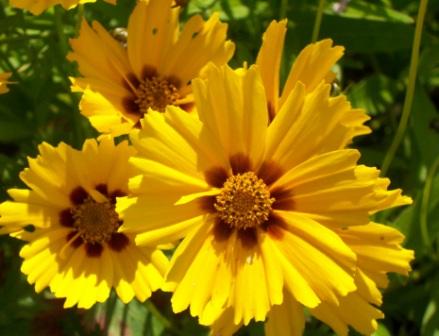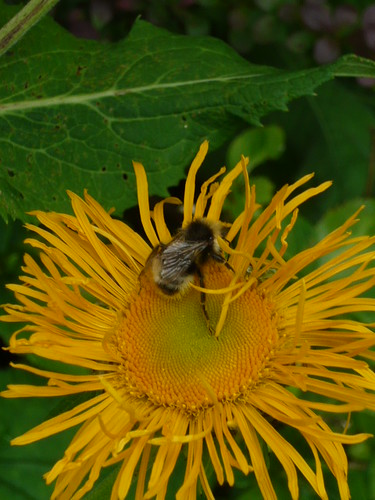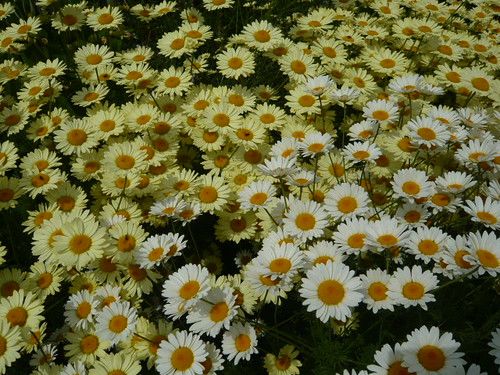Daisies can be Yellow
Daisies are a large group of flowering plants under the family name Compositae. Included in the daisy family are well known groups such as Rudbeckia, Osteospernum, Helianthus, Coreopsis, Helenium even the cornflower and Globe Thistle.The Compositaes (Asteracea) are recognisable through their compound blooms consisting of many tiny flowers. A daisy has a yellow “core” of 200 disc florets, surrounded by 50 marginal, white ray florets with a conspicuous limb (these are the petals also called ligules). A single daisy “flower” contains about 250 separate flowers! Each central floret, a flower in its own right, has a style, anthers, corolla, pappus and ovary. The Daisy is one of the “core families” on which research at the Royal Botanic Gardens, Kew concentrates.
Perennial Yellow Daisies
The RHS produced a bulletin on this subject and an interesting pdf can be down loaded. It considers for AGM status the result of trials of Coreopsis, Helenium, Helianthus, Heliopsis, Inula, Rudbeckia, Silphium and Solidago any garden selection of which will give you a great yellow spread of colour and form. Detailed notes on habit, floriferousness, colour, vigour and hardiness as you would expect from AGM plants.
Only some varieties were given the AGM as a plant must:-
be excellent for garden decoration or use, be of good constitution, not require specialist care, not be particularly susceptible to pest or disease, not prone to revert and should be available from nurseries or specialist growers.
Many botanic gardens will give an overview of the Daisy family particuklarly the Universities mof Oxford, Dundee, Cambridge and St Andrews plus Chelsea Physic Garden, Kew and Cruickshank Botanic garden Aberdeen.




One thought on “Daisies can be Yellow”
Comments are closed.